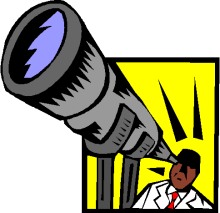|
|
93' SBIOA Exam
|
|
| 93
Exam Part A: M/C Part B: Short Answers Part C: Essay Question 94 Exam 95
Exam 97
Exam
|
PART A:
MULTIPLE CHOICE. THERE IS AN ANSWER PAGE FOR THESE QUESTIONS.
USE IT.
11
.
During the growth of a tomato plant from a seed, it increases
considerably in biomass. Which of the following
materials, obtained from the environment, are necessary for the
growth and increase in biomass?
a
.
carbon dioxide and water
b
.
water, nitrate, and methane
c
.
carbon dioxide, oxygen, and nitrogen
d
.
*correct*water, carbon dioxide, and mineral salts
e
.
mineral salts, carbon dioxide, and oxygen
12
.
The rate of growth of a natural population
a
.
always reaches the carrying capacity of the ecosystem.
b
.
when graphed, always has a positive slope.
c
. is limited by the carrying capacity of the
ecosystem.
d
. is calculated by
subtracting death rate from birth rate.
e
.
exceeds the death rate and rate of emigration.
13
.
The current fluid mosaic model of the cell membrane was devised
to account for all the following observations EXCEPT one.
Which one is NOT part of the model?
a
.
Phospholipids molecules are aligned with their fatty acid tails
in the centre, and their phosphate heads towards the outside.
b
.
Integral (intrinsic) proteins are interspersed through the
phospholipid bilayers.
c
.
Integral (intrinsic) proteins move from place to place in the
membrane.
d
.
Phospholipid bilayers are flexible and somewhat fluid.
e
.
*correct*Peripheral (extrinsic) proteins move in the
space between the bilayers
14
.
In the process of fermentation, glucose is broken down into
carbon dioxide and alcohol, with the evolution of some energy.
With respect to this process, it can also be said that,
a
.
*correct*entropy is increasing as the reaction takes
place.
b
.
entropy is being converted into free energy.
c
. the
reaction violates the second law of thermodynamics.
d
. the free energy
of tghe system is increasing.
e
. the released
energy is eventually used to produce more glucose.
15
.
`Free energy' is
a
. energy that can do useful work.
b
. energy which is
released in every chemical reaction.
c
. energy
released during endergonic reactions.
d
. the total energy
involved in a chemical reaction.
e
. heat energy.
16
.
The second law of thermodynamics states that as entropy
increases, free energy
a
.
remains constant.
b
.
*correct*decreases.
c
.
depends on the chemical reaction involved.
d
.
varies inversely with the absolute temperature.
e
. is released as
heat energy.
17
.
Proteins are to ribosomes as ATP is to the
a
.
chromosomes.
b
.
centrioles.
c
.
Golgi apparatus.
d
.
*correct*mitochondria.
e
.
nucleus.
18
.
How many guanine bases are present in a DNA molecule 1000
nitrogen base pairs long, if 20% of the molecule consists of adenine
molecules?
a
. 600
b
. 300
c
. 400
d
. 200
e
. 800
19
.
If the base sequence in DNA is AATCGG, what is the sequence of
the complementary chain?
a
. TTGCAA
b
. CCATUU
c
. TTAGCC
d
. UUAGCC
e
. TTUGCC
20
.
One difference between DNA and RNA is that
a
. the carbohydrate parts of the two molecules
differ.
b
. the positions of
the phosphate bonds differ.
c
. DNA
contains nucleotides while RNA has nucleosides.
d
. DNA contains
guanine and RNA does not.
e
. RNA forms a
double helix while DNA is single.
<-Page 1 --- Page 2 --- Page 3->
|
